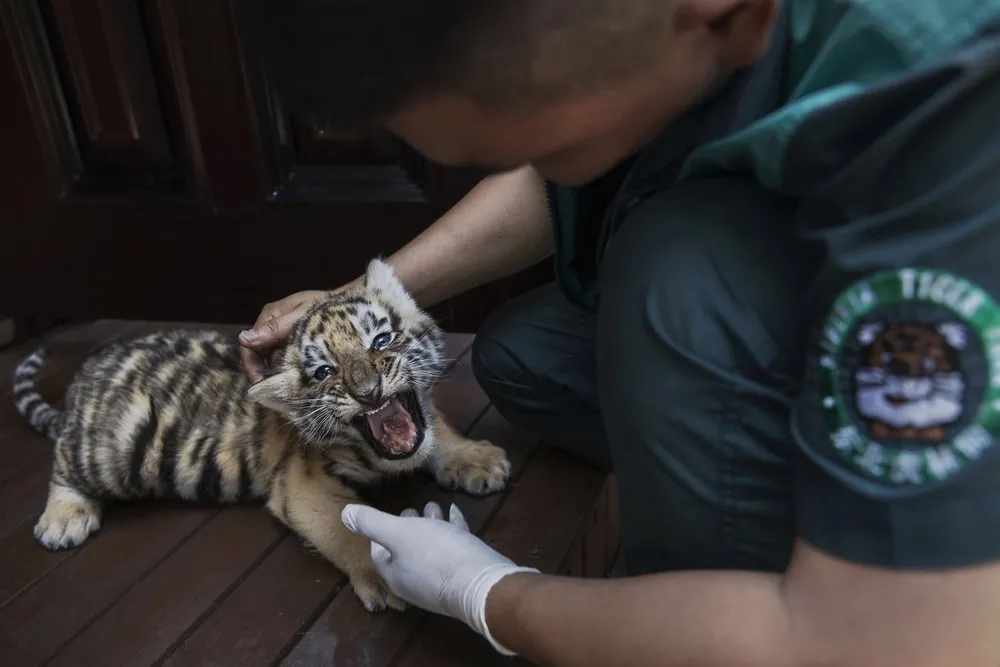|
A trainer feeds baby Siberian tiger at the Heilongjiang Siberian Tiger Park on July 5, 2017 in Harbin, northern China. The center is one of two Siberian tiger parks in the Chinese province of Heilongjiang, about 500 kilometers (300 miles) from the border with Russia. It is considered the world's largest for breeding the Siberian, or Amur, tiger which is listed as endangered by the World Wildlife Federation. As many as 540 are known to exist. The Harbin center opened in 1986 and claims an 80-percent survival rate among the 100 or so cubs born in captivity every year, though a government plan reveals it could be another decade before the program actually releases a tiger to the wild. In 1996, it opened to the public as a commercial park allowing tourists on safari buses to view its 600 tigers in an open range area meant to simulate their natural habitat. Customers pay extra to throw live chickens or ducks to the tigers to eat, or to hold a tiger cub. Critics regard the park as a large-scale breeding farm, where tigers are kept in unnatural conditions and unable to hunt to survive. Despite a longstanding government directive, some facilities in China have been accused of trading products made from tiger parts, including “wine” made by soaking tiger bones in alcohol. The park divides the tigers among different areas in the park according to age and seniority, and cubs begin “wilderness training” when they are three to four months old. Wildlife experts say inbreeding and natural habitat destruction pose the greatest risk to the Siberian or Amur tiger subspecies. (Photo by Kevin Frayer/Getty Images)
|

